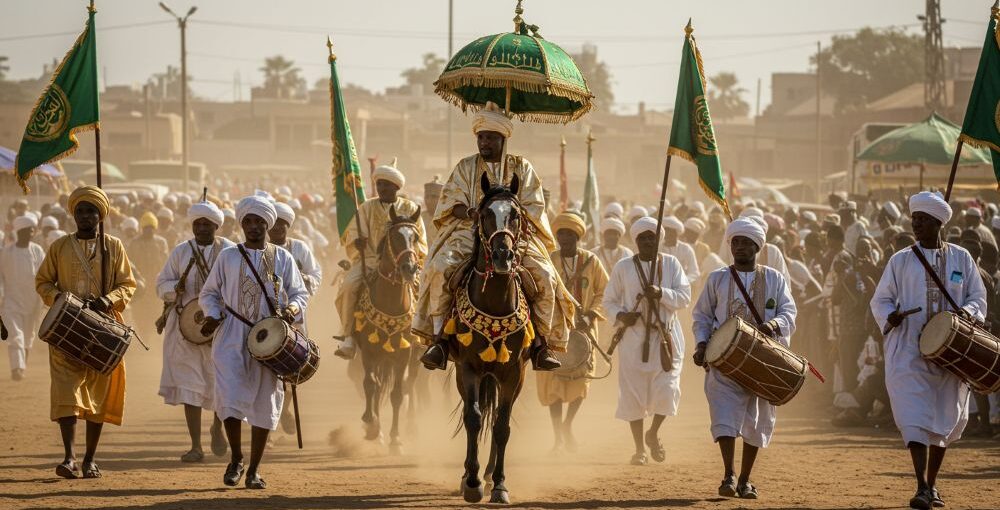Introduction: The Thundering Hooves of History
In the northern cities of Kano, Katsina, Zaria, and Sokoto, there exists a centuries-old spectacle that transforms the streets into a cavalcade of color, culture, and cavalry. The Durbar Festival is not just a celebration; it is a thunderous procession of faith, loyalty, and ancestral pride. A fusion of Islamic tradition, military pageantry, and royal homage, the Durbar is one of the most iconic and visually stunning cultural events in West Africa.
Historical Origins of the Durbar
The Durbar Festival dates back to the Emirate period during the 14th century, originally organized as a military parade to display the strength of the Emir’s cavalry in defense of the caliphate. Over time, especially during Islamic festivals like Eid al-Fitr and Eid al-Adha, the event evolved into a religious and cultural expression—where communities celebrated not only Islamic piety but also allegiance to traditional authority.
What Makes the Durbar Unique
- 🐎 Royal Cavalry Parade: The Emir and his nobles ride majestic, richly adorned horses flanked by royal guards. Their entry into the public square is a moment of awe, signaling power and spiritual authority.
- 🕌 Islamic Devotion: The Durbar is typically held after Eid prayers, beginning with blessings and religious chants, uniting the Hausa-Fulani Muslim community in joyful reverence.
- 👑 Homage to the Emir: The highlight is the paying of homage to the Emir, where warriors, titleholders, and village heads process in regalia, offering symbolic gifts and loyalty.
- 🎭 Cultural Elegance: Participants wear elaborate robes, turbans, embroidered kaftans, and beads. The horses themselves are clothed in colorful velvet, gold threadwork, and metal ornaments—an art passed through generations.
- 🥁 Traditional Music and Dance: Praise singers, drummers, and dancers accompany the procession, with each group announcing their presence through a unique sonic signature.
Durbar Across Cities: Regional Flavors
Though celebrated widely in northern Nigeria, each city has a distinct interpretation of the Durbar:
- Kano Durbar is the most widely publicized, attracting international visitors and major media.
- Katsina Durbar is deeply traditional, often considered the most spiritual and ceremonial.
- Zaria’s Durbar emphasizes historical accuracy and military formation.
- Sokoto’s Durbar reflects its status as the seat of the Sultan of Sokoto, the spiritual leader of Nigerian Muslims.
More Than A Festival: A Cultural Lifeline
The Durbar is more than a heritage display—it is a living reenactment of history, a reminder of precolonial governance, and an affirmation of northern identity. In an era where many fear cultural dilution, the Durbar provides a platform for cultural continuity, intergenerational teaching, and local economic stimulation.
Artisans who make horse decorations, tailors, drummers, and food vendors all benefit from the festival’s economic ripple.
Conclusion: The Enduring Power of Pageantry
The Durbar Festival remains one of Nigeria’s most dramatic and spiritually resonant events. It bridges faith and culture, power and peace, tradition and modernity. In every stomp of a horse’s hoof and every beat of a talking drum, there is a message: Northern Nigeria remembers who it is.
And in that memory, there is majesty.


